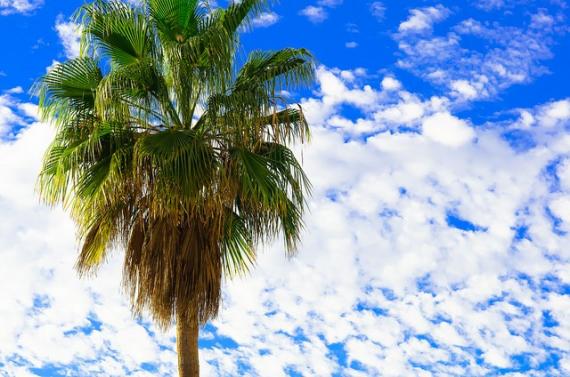Tenerife is known as ‘the island of eternal spring’, thanks to its pleasantly warm year-round climate. The island is divided into two microclimates, with the north being generally cooler and damper than the dry, sun-kissed south. The weather in general is fairly predictable – think long warm days and short mild nights – so you won’t need to be constantly checking the forecast when you’re here.
The best time to visit Tenerife is either just before or just after summer, so the beginning of June or the end of September. During these times, the weather and sea temperatures are pleasantly warm without being too hot. Cloudy days and rainfall are also very uncommon during these months, with sunshine and clear blue skies almost guaranteed.
Tenerife North
In the north of the island, the average temperature is around 20°C for the entire year. The coolest month is January, when temperatures can drop as low as 12°C. During winter, cloudy days are fairly common, as is rainfall which usually comes in downpours that generally last around ten minutes. If you visit during winter, you should think about packing some warm jumpers and some waterproof clothing.
On the other hand, the hottest months of the year are August and September, when temperatures regularly reach up to 30°C. During summer, clouds and rainfall are almost unheard of, with clear blue skies and sunshine being the norm. If you visit during summer, you should definitely bring loose clothing and plenty of suntan lotion.
The warm sea temperature throughout the year means that you can enjoy a dip in the ocean, no matter which month you visit. September and October have the warmest sea temperatures, at around 24°C, whilst February and March have the coolest sea temperatures at 20°C, which is still more than warm enough for a swim.
Although they’re not as common in the north of Tenerife as they are in the south, calimas can still happen at any time of year. A calima is a hot and dusty spell of weather created by sand storms blown over from the west coast of Africa. A calima can last for anything from one day to one week and is characterised by hot temperatures, dry air and low visibility.
Tenerife South
The south of Tenerife enjoys much warmer weather, with the average temperature around 24°C. The coolest months of the year are January and February, with temperatures dropping as low as 18°C. Just like in the north of the island, cloudy spells are fairly common in winter, although they normally only last a few hours before the sun shines through. Heavy rain downfalls are common between November and February, but they’re also short-lived and rarely last more than ten minutes.
August and September are the hottest months of the year to visit the south, when temperatures can reach up to a sizzling 40°C, or even higher if there is a calima. From June until September, clouds are very rare, with showers being even more uncommon.
The average sea temperatures in the south are similar to those in the north, with the warmest months for a swim being September and October. Similarly, February and March are also the coolest times to take a dip.
Whatever the weather’s like when you’re in Tenerife, you’ll always find plenty of things to see and do. Warm sunny days are perfect for hitting the beach or water park, whereas cool overcast days are ideal for hiking or visiting a zoo.









 'Palm Tree - Tenerife - Canary Islands - Holiday. By Thomas Tolkien' - Attribution:
'Palm Tree - Tenerife - Canary Islands - Holiday. By Thomas Tolkien' - Attribution: